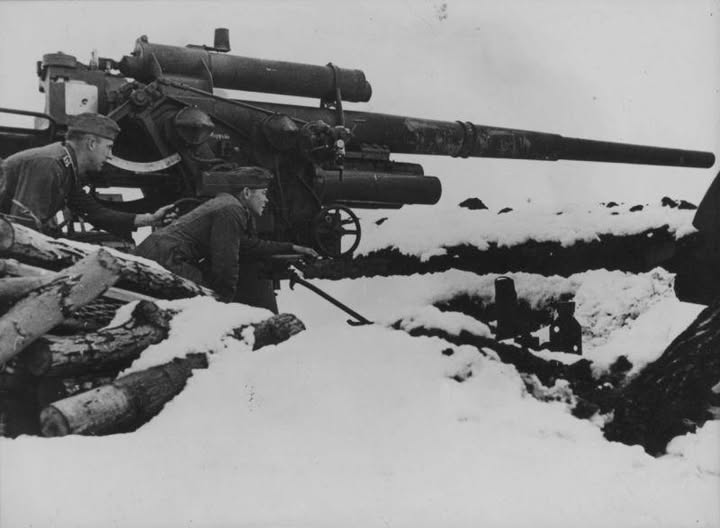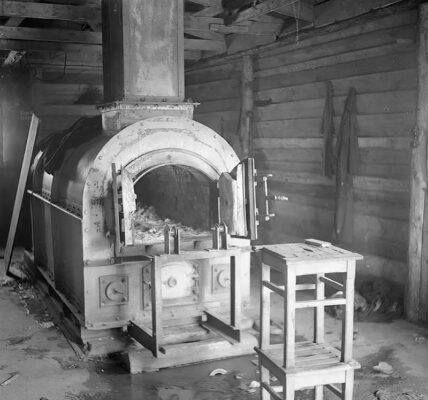- Homepage
- Uncategorized
- The best weapon of World War II – Flak 88 in breathtaking photos.N
The best weapon of World War II – Flak 88 in breathtaking photos.N
The best weapon of World War II – Flak 88 in breathtaking photos
Countless weapons and war machines were used in World War II—from assault rifles to tanks to strategic bombers. But among all this technology, one weapon stands out in particular: the 8.8 cm Flak , better known as the Flak 88. Originally developed as an anti-aircraft gun, it quickly became the Wehrmacht’s versatile wonder weapon. Stunning historical photos show this imposing cannon in action—a fascinating yet harrowing look at the reality of war.
A technical masterpiece of its time
The Flak 88 was developed by the Krupp company in the 1930s. It was originally intended to combat enemy aircraft at high altitudes. However, its enormous potential in ground combat—especially against tanks—was soon recognized. The gun could be aimed at both air and ground targets and had impressive penetration. Its shells could easily penetrate the armor of Allied vehicles—including the British Matilda tanks and the Soviet T-34.
With an effective range of over 14 kilometers and a muzzle velocity of more than 800 meters per second, the Flak 88 was not only powerful but also extremely accurate. Its versatility was legendary: it was installed on the ground, mounted on railway wagons, or used on self-propelled chassis as a mobile anti-tank gun.
In action on all fronts
The Flak 88 was used on all major fronts—in North Africa, on the Eastern Front, in Italy, and France. Its use was particularly notorious in the Battle of France (1940), when German units used the Flak 88 to devastatingly defeat enemy tank formations. Later, it proved its worth again during the African campaigns under General Rommel , where its range and precision stopped British tank armies in their tracks.
The Flak 88 was also a decisive factor on the Eastern Front . Given the sheer mass of Soviet tanks, reliable anti-tank defense was essential. Many photographs show flak emplacements in snowy Russian landscapes—surrounded by sandbags, camouflage nets, and focused soldiers in winter uniforms. These images document not only the weapon itself, but also the harshness and brutality of the war.
Flak 88 in pictures – a visual chronicle of destruction
Historical photographs of the Flak 88 can be found in many war archives. They show not only the weapon, but also the men who operated it – focused, exhausted, often barely older than twenty. The weapon itself often appears oversized, almost majestic in these photos – as a symbol of German engineering, but also as an instrument of death.
A particularly striking image shows an anti-aircraft gun emplacement in North Africa at sunset. The silhouette of the gun stands out dramatically against the orange-red sky. Another photo shows an Flak 88 in action against Allied tanks in Normandy – smoke rises as soldiers reload grenades. Such images have an almost cinematic feel, but at the same time, they remind us that behind every shot lies human suffering and violence.
Why was it considered the “best weapon”?
The Flak 88’s designation as the “best weapon of World War II” is no coincidence. Several factors support this:
-
Versatility : anti-aircraft, anti-tank, artillery – all with a single weapon.
-
Firepower : Hardly any Allied armor could withstand it.
-
Reliability : The Flak 88 functioned reliably in various climates and terrains.
-
Moral effect : The mere sight of the cannon could intimidate enemies. It was notorious.
It was also a symbol of National Socialist propaganda – it was often shown on posters, in newsreels and military parades to portray the Wehrmacht as technically superior.
After the war – the Flak 88 as a legend
Even after 1945, the Flak 88 remained in people’s memories. Several countries adopted the model for their own armies. Museums around the world—from the Imperial War Museum in London to the Military History Museum in Dresden—now exhibit Flak 88 guns. They stand there not only as a technical relic, but also as a memorial. Many visitors view them with mixed feelings—admiration for the engineering prowess, but also contemplation about the destructive power they symbolize.
In popular culture—from documentaries to video games like “Call of Duty”—the Flak 88 is a recurring motif. It symbolizes the military efficiency of the Third Reich without negating the moral responsibility associated with its use.
Conclusion
The Flak 88 was more than just a cannon—it was a symbol. Its presence in breathtaking historical photographs lends it a certain fascination to this day—not only for military historians, but also for all those seeking to understand the complex facets of World War II.
But as impressive as it was, Flak 88 also reminds us how human creativity and technological progress can be used to destroy. Its images are a window into a dark past—and a warning for the future.



